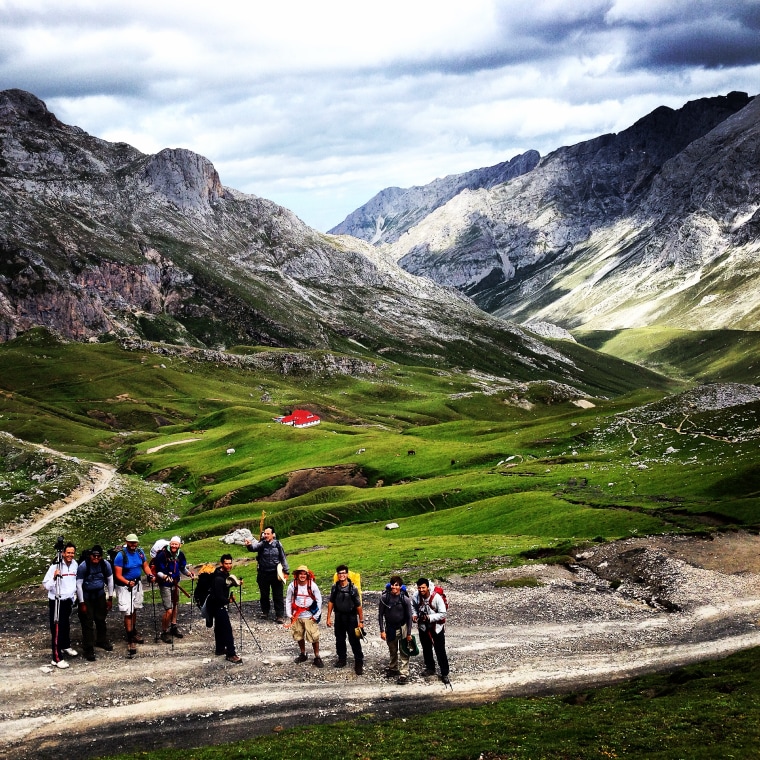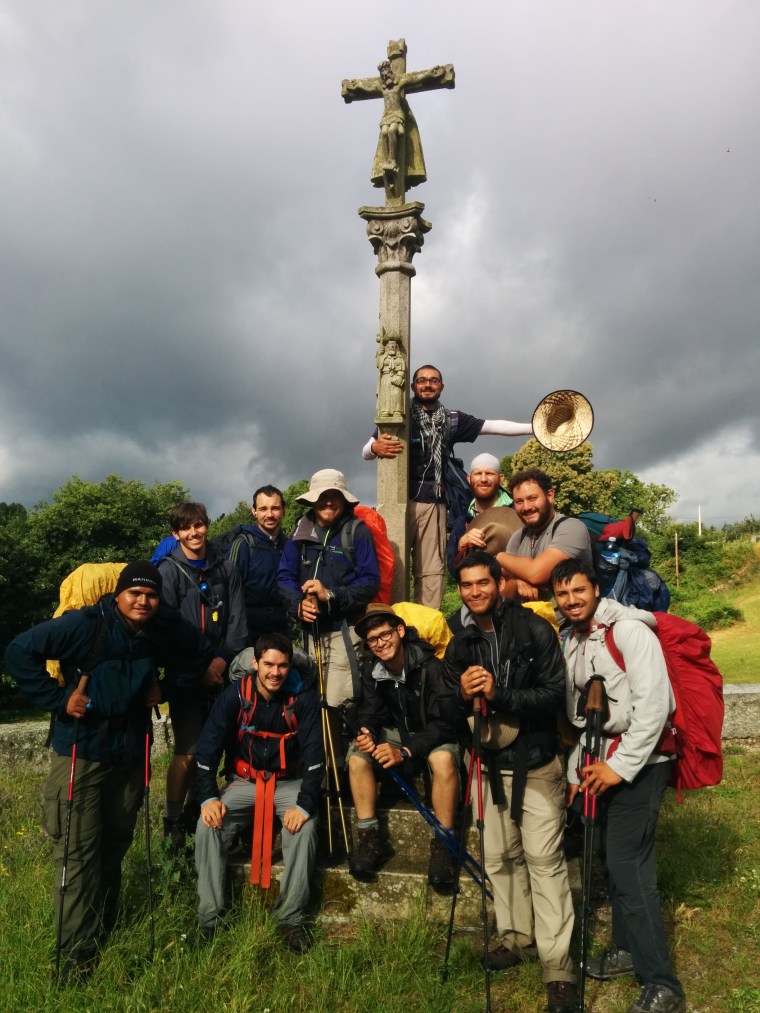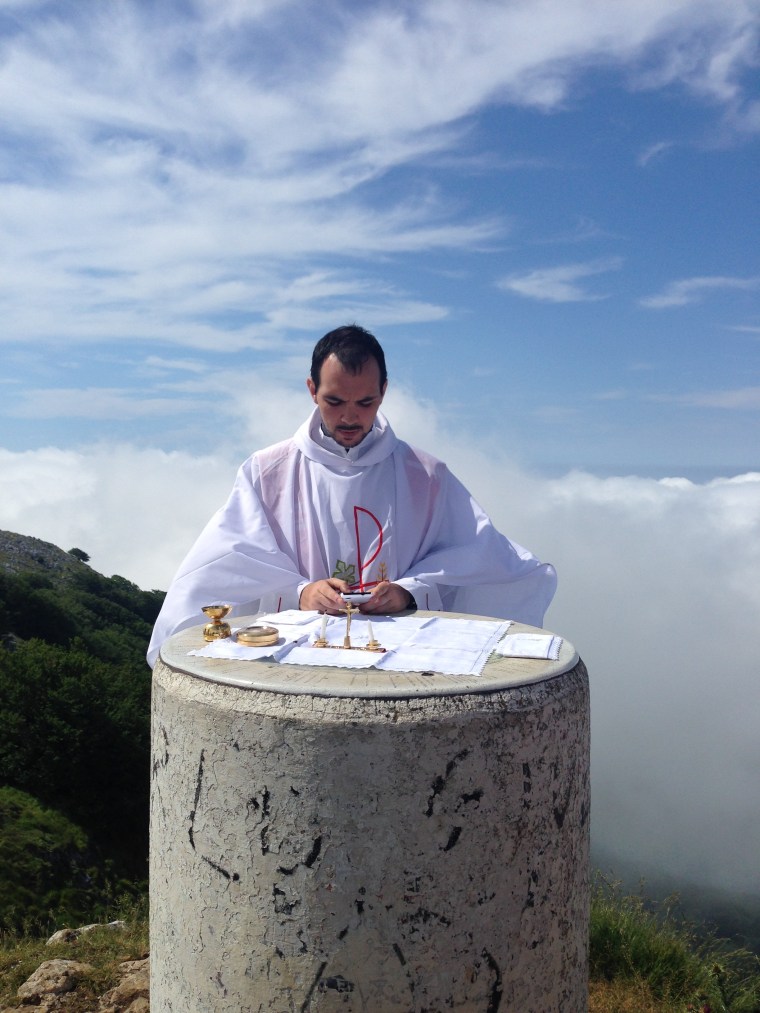Pedro Gutierrez said he didn’t know much about the Way of St. James, a centuries-old Christian pilgrimage in Spain, when the priest from his parish in Gilbert, Arizona, invited him and others to go.
“I understood that it was going to be a very physically difficult journey and one that would help me grow in my faith,” the 28-year-old said. “I felt that it was something I could not turn down, so I agreed to go.”

The Way of St. James, known as el Camino de Santiago in Spanish, is a large network of pilgrimage routes that stretch hundreds of miles across Spain and other parts of Europe. The routes lead to a cathedral in a town called Santiago de Compostela in Galicia, Spain. It is said that the remains of St. James the Greater, one of Jesus’ closest disciples, are buried there.
Today, the Way of St. James is one of the most popular Christian pilgrimages. Though most people take the journey for religious purposes, some do it for the adventure and the exercise. Last year, close to 262,500 people from different backgrounds participated in the pilgrimage, and the vast majority of them walked the whole way, according to the Pilgrim’s Office in Santiago de Compostela.
The Northern Way is one of the most popular routes pilgrims take. It starts at a town in northern Spain called San Sebastian, near the border with France, and is about 450 miles from Santiago de Compostela. That’s the route Gutierrez and nine other men took along with Father Sergio Muñoz Fita of St. Anne’s Catholic Parish. The group went on the pilgrimage to search for the meaning of life and to find God’s will for them.
Together, they walked nearly 600 miles in 34 days in the summer of 2014, sometimes venturing off to visit historic Catholic sites. Their voyage took them through some of the most beautiful landscapes in Spain, but it was far from easy. They walked on blisters and swollen feet, slept on church floors and went on very little sleep. Still, they managed to arrive at their final destination: the Cathedral of Santiago de Compostela.
A camera crew followed them along the way, and now their incredible journey has been made into a documentary called “Footprints.” The film, produced by Infinito Más Uno, is complete. But lack of funding to cover distribution and translation costs has put its release on hold, though there have been a few private showings, including one at the Vatican last summer.
In Arizona, an online fundraising effort is underway to pay for the costs needed to show the film in several theaters across the state.
Producer Juan Manuel Cotelo said people can request to have “Footprints” shown in their city or state by visiting the film’s website. He said if there are many requests from a particular area, his production company will cover the costs to show the film there.

“I am sure that many people will come out of the theater with strong desires to love more and to begin walking through life with a new perspective, full of hope,” Cotelo said.
Fita said he dreamt about walking the Way of St. James ever since he was a child. So when the opportunity came to go on the pilgrimage, he took advantage of it and invited people from the parish to join him.
He had a few requirements, though. He asked that those interested in the pilgrimage have “a spiritual motivation to go.” They also had to be physically fit enough to handle walking long hours each day. He ended up picking 10 men from the parish, the majority of them Latinos in their 20s.
“I wanted them to develop a close friendship with Jesus Christ,” Fita said, when asked what he hoped the group would take away from the pilgrimage.
In the months leading up to the journey, the men prepared both spiritually and physically. They met at each other’s houses for prayer and went on hikes together. But they said nothing could prepare them for what was to come.
As soon as they landed in France, they began walking. They averaged 20 miles a day and continued walking despite blisters on their feet, injuries and aching backs. They walked in inclement weather on and got very little rest. During breaks, they prayed the rosary and celebrated mass.
“I don’t think I ever went a day without blisters,” Gutierrez said. “But I kept reminding myself that the reason I was doing this was to push myself. That helped me keep walking, especially on the harder days like when I strained my leg muscle and could barely walk.”

The first few days were particularly difficult for Isaac Garcia, who suffers from asthma. The 25-year-old had a difficult time going up mountains and adjusting to the altitude and foggy weather. He said his asthma was flaring up at the beginning, and he couldn't use his inhaler because it increased his heart rate. He said what kept him going was the desire to complete the journey alongside the other pilgrims, with whom he developed a strong bond.
For John Caballero, who was already making plans to go alone on the pilgrimage when Fita invited him, the most difficult part about the pilgrimage was getting into the mindset that he was there as a pilgrim, not as a tourist. The 30-year-old said he went on the pilgrimage to turn his life around—he wanted to stop drinking and using drugs, and instead grow closer to God. But in the first two weeks, there were times he left the group during breaks to go drink a beer and to explore on his own.
“It took two weeks into the pilgrimage for me to truly understand that I needed to work on myself and stop being so selfish,” Caballero said. “I decided that for the rest of the way, I was going to give up alcohol and make this a spiritual pilgrimage.”
The rest of the way, he said, was “very special to me because that’s when I truly feel I encountered the Lord and I encountered brotherhood.”
Halfway through the pilgrimage, many in the group felt exhausted and frustrated. Some began having doubts about making it to the end.
But everything changed when they took a detour to visit the Monastery of Santo Toribio de Liébana, which houses the largest piece of the cross upon which it is believed Jesus was crucified. Fita described it as “possibly one of the most important relics” of the Catholic Church and said the group went through a complete “transformation” after they had a chance to venerate it.
“They became closer and perceived their pain in a different way,” Fita said.
By the last day, the pilgrims—many of whom didn’t know each other before the pilgrimage—developed a strong brotherhood and decided to make one last sacrifice together: walk the final miles to the Cathedral of Santiago de Compostela barefoot.

“Getting there was definitely a bittersweet moment,” Garcia said. “I remember feeling happy that we had reached our goal and that we were there as brothers. But I also remember having this feeling of what happens tomorrow?”
Fita said he reminded the group that getting to Santiago de Compostela wasn’t the end, but rather the beginning of a new life — one that was changed by the experiences and lessons they encountered along the way.
Since being back, the pilgrims say they’ve all developed a more active prayer life. Garcia said the pilgrimage taught him to be more humble and to be of service to others, while Gutierrez said he learned he must take chances in order to find his purpose in life. And Caballero said the pilgrimage brought him closer to his faith and gave him a sense of direction.
“It was definitely a life-changing experience for all of us,” Garcia said.
